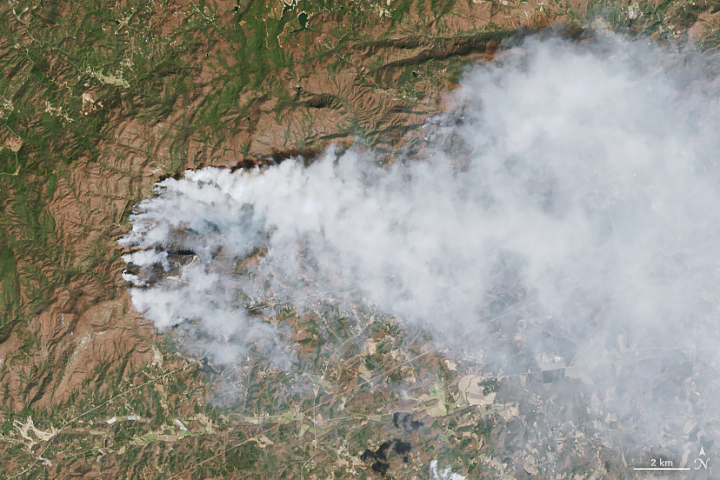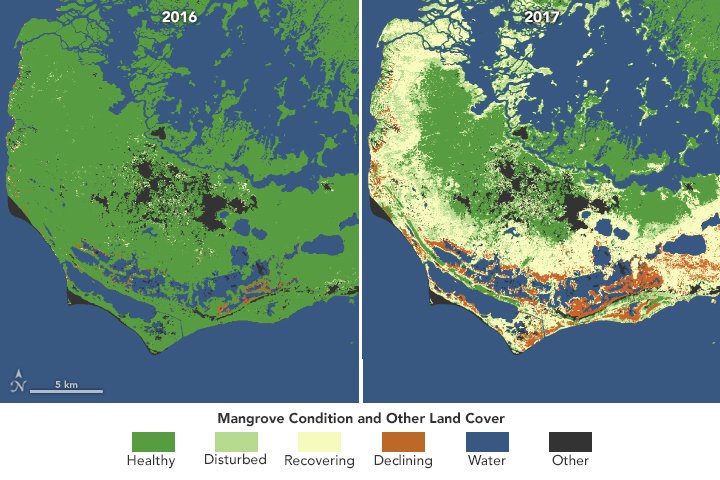- Home
- Missions
- Data
- Communications
- People
- The Earth Observer Newsletter




Recent Imagery
You will be directed to the NASA Visible Earth webpage when you select Images by Mission below, or click on the images at right that are randomly generated to represent four out of all possible topics.
You are here
Global Precipitation Measurement Core Observatory (GPM Core)
Status:
Current, Extended Mission
Mission Category:
Precipitation Missions
Launch Date: February 27, 2014
Launch Location: Tanegashima Space Center, Japan
Designed Life: February 27, 2017
The Global Precipitation Measurement (GPM) mission is an international partnership co-led by NASA and the Japan Aerospace Exploration Agency (JAXA). The mission centers on the deployment of the GPM Core Observatory and consists of a network, or constellation, of additional satellites that together will provide next-generation global observations of precipitation from space. The GPM Core mission builds on the success of the Tropical Rainfall Measuring Mission (TRMM) and provides more accurate, frequent (3-hourly), global, high spatial resolution, and microphysically detailed measurements of precipitation. The GPM Core Observatory improves upon the capabilities of its predecessor, the TRMM satellite, with advanced precipitation instruments and expanded coverage of Earth’s surface. The GPM Core carries two instruments: the GPM Microwave Imager (GMI) and Dual-frequency Precipitation Radar (DPR). These instruments collect improved observations that allow scientists to better “see” inside clouds. The GMI has the capability to measure the amount, size, intensity and type of precipitation, from heavy-to-moderate rain to light rain and snowfall. The DPR returns three-dimensional profiles and intensities of liquid and solid precipitation. These data allow scientists to see the internal structure of storms within and below clouds.
Key Global Precipitation Measurement Core Observatory Facts
| Mission/Portal Page: | http://science.nasa.gov/missions/gpm/ |
|---|---|
| Launch Vehicle: | H-IIA |
| Altitude:Distance from sea level. | 407km |
| Inclination: | 65° |
| Instruments: |
DPR (Dual-frequency Precipitation Radar) GMI (GPM Microwave Imager) |
| Project Scientist(s): |
Gail Skofronick-Jackson |
Related Publications:
- Global Precipitation Mission (GPM) (Mission Brochures - 2.15 MB)
- GPM Core Observatory (2014) (iBooks - 5.52 MB)
- GPM: Global Precipitation Measurement (Lithographs - 432.12 KB)
- Understanding Earth: What's Up with Precipitation? (Booklets - 6.55 MB)
Relevant Science Focus Areas:
- Climate Variability and Change
- Water and Energy Cycles
- Weather
Relevant Science Questions:
- How does the Earth system respond to natural and human-induced changes?
- How is the global Earth system changing?
- How will the Earth system change in the future?
Science Goals:
- Climate Prediction-Improve climate prediction through progress in quantifying space-time variability of precipitation along with improvements in achieving water budget closure, plus focused research on relationships between precipitation and climate variations.
- Weather Prediction-Improve the accuracy of global and regional numerical weather prediction models through accurate and precise measurements of instantaneous rain rates, made frequently and with global distribution, plus focused research on more advanced techniques in satellite rainfall data assimilation.
- Flood/Fresh Water Resource Prediction-Improve flood and fresh water resource prediction through frequent sampling and complete Earth coverage of high-resolution precipitation measurements, plus focused research on more innovative designs in hydro-meteorological modeling.
Related Applications:
- Agricultural Efficiency
- Aviation
- Disaster Management
- Energy Management
- Public Health
- Water Management

